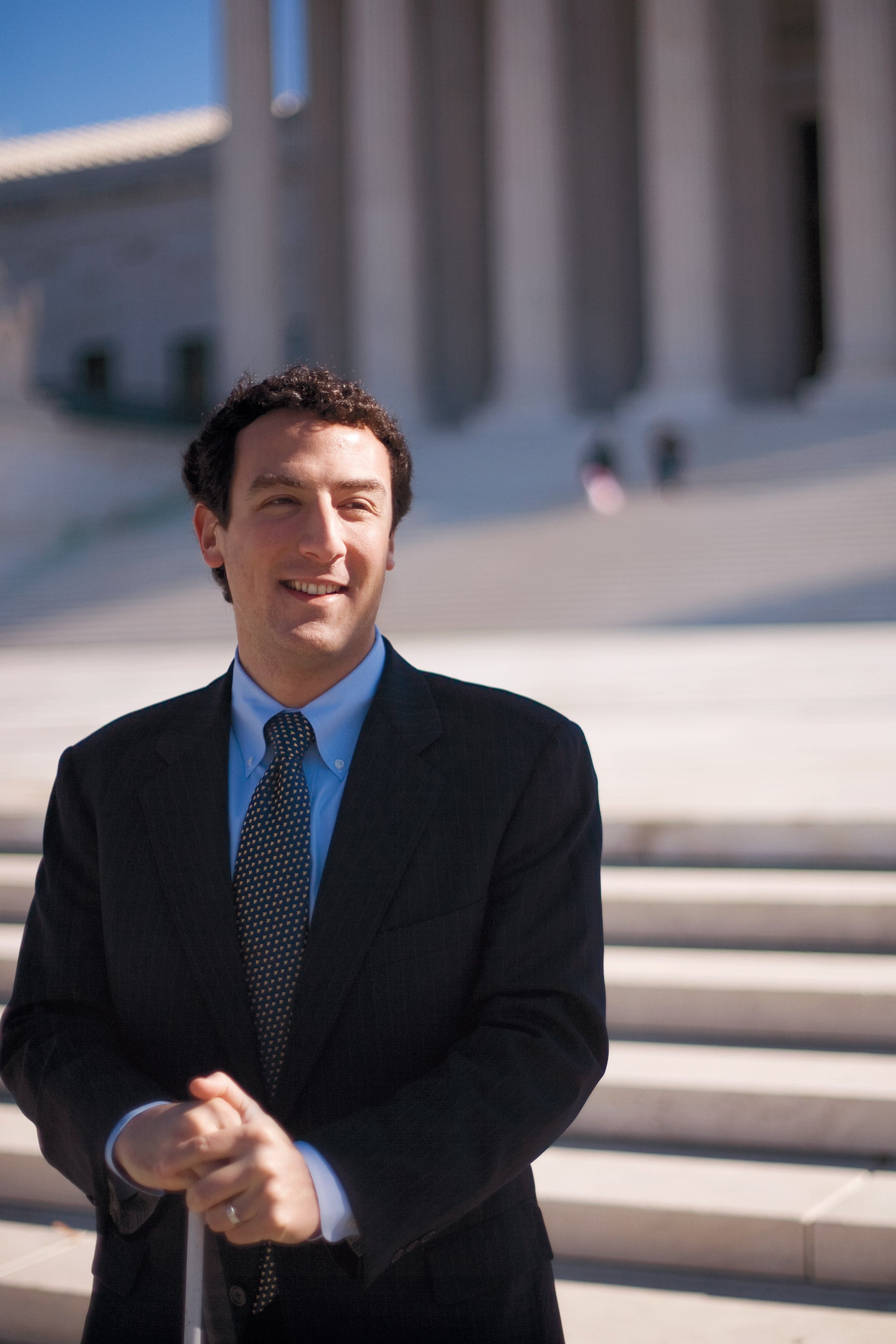The first time (or two) Isaac Lidsky ’04 was denied a Supreme Court clerkship, he didn’t sweat it.
He had overcome other challenges and wouldn’t let a few rejection letters get in the way of a dream he’d held since boyhood. “I used to joke that my rule for myself was that I’d continue applying until I was older than the youngest justice,” he says.
Four years and 37 applications later, the 29-year-old received an offer from Justice Sandra Day O’Connor for a clerkship for the 2008-2009 term—becoming one of the elite few selected each year and the only blind clerk to serve in the history of the Court.
Since July, Lidsky has been assisting the retired justice, who sits on several appeals court cases a year, with casework and a full schedule of speaking engagements. He is also detailed to Justice Ruth Bader Ginsburg ’56-’58. He manages the reading-intensive position with technology that translates text into voice.
At 13, Lidsky was diagnosed with retinitis pigmentosa—part of a family of retinal degenerative diseases that afflict millions of Americans. Two of his three sisters also have the condition.
Lidsky was already at the peak of a successful acting career, having starred in more than a hundred commercials and just landed a role as the class nerd in the popular sitcom “Saved by the Bell.” The news was devastating, he says, but he didn’t have noticeable symptoms and the problem seemed ages away.
Two years later, he began losing his vision. He graduated from Harvard with a degree in mathematics at 19, founded an Internet advertising company and applied to law school, a path he set for himself after watching his father, a Miami litigator, in court.
In law school, Lidsky’s impairment went from being a nuisance to a disability. Harvard arranged for accommodations for note- and test-taking, as well as cane training—something he had previously resisted. “It was hard to view it as anything other than a surrender,” he says. But he found the cane helped with safety and mobility, and it also let people know that he had vision problems, dispelling the awkwardness and uncertainty of interactions.
After HLS, Lidsky clerked for U.S. Court of Appeals Judge Thomas Ambro in Wilmington, Del. Later, as an advocate in the civil division of the U.S. Department of Justice, he argued more than a dozen cases before several courts. His father recalls watching in amazement as Lidsky handled a federal appeal—citing pages, footnote numbers and cases without a single piece of paper. Lidsky says he didn’t have a choice: “If it’s not in my head, it’s not going to get out there.”
In 2005, Lidsky founded Hope for Vision to raise money for the development of treatments and cures for blinding diseases. The organization (www.hopeforvision.org), initially established in Miami, has grown to 12 groups nationwide and has raised almost $5 million for research. This summer, they launched a nationwide campaign to raise funds to support an ambitious goal: 20/20 vision for those with retinal degenerative diseases by 2020.
By early 2008, six months after he’d submitted his latest application, his optimism about getting a Supreme Court clerkship faded. He resigned from the Department of Justice, took a position with Jones Day and prepared to move to London with his wife, Dorothy (Harvard College ’02), who was scheduled to begin a master’s in art business there. The week before his going-away party at Justice, the offer letter from Justice O’Connor arrived.
“I literally could not believe it,” says Lidsky. “It took two weeks for me to actually really believe it happened.” His first few months at the Court have been everything he’d hoped for and more.
“I am in a phenomenal place right now,” says Lidsky. “I really feel blessed.”
